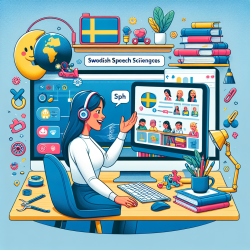Introduction
The landscape of allied health services for children is rapidly evolving with the integration of hybrid models that combine in-person and remote healthcare delivery. The recent scoping review titled "Hybrid approaches to allied health services for children and young people: a scoping review" provides valuable insights into the potential and challenges of these hybrid models. This blog aims to translate the research findings into actionable strategies for practitioners seeking to enhance their service delivery and outcomes for children.
Understanding Hybrid Allied Health Services
Hybrid allied health services blend traditional face-to-face interactions with remote therapy sessions, leveraging technology to increase accessibility and flexibility. The review highlights that while definitions of hybrid services vary, the core concept involves using both synchronous (real-time) and asynchronous (store-and-forward) methods to deliver care. This approach is particularly beneficial for reaching children in geographically isolated areas or those with limited access to specialized services.
Key Findings from the Scoping Review
- Service Characteristics: The review identified that most hybrid services currently focus on mental health interventions, with fewer applications in physical, occupational, and speech therapies. This presents an opportunity for practitioners in these fields to explore hybrid models further.
- Outcome Measures: While the effectiveness of hybrid services is promising, the review notes a lack of standardized outcome measures. Practitioners are encouraged to adopt consistent metrics to evaluate the impact of their interventions.
- Implementation Challenges: The review underscores the importance of initial in-person sessions to establish therapeutic alliances and address technological barriers. Practitioners should consider these factors when designing hybrid service models.
Practical Applications for Practitioners
To implement effective hybrid allied health services, practitioners should consider the following strategies:
- Start with In-Person Sessions: Begin with face-to-face meetings to build rapport and troubleshoot any technical issues. This approach can enhance the effectiveness of subsequent remote sessions.
- Utilize Standardized Tools: Adopt standardized assessment tools and outcome measures to track progress and ensure consistency across different service settings.
- Leverage Technology: Use commercially available hardware and software to facilitate remote sessions. Ensure that both practitioners and families receive adequate training to use these tools effectively.
- Engage Families: Involve family members in the therapeutic process to enhance engagement and support for the child. This is particularly important for younger children who may require additional assistance during remote sessions.
Encouraging Further Research
While the current literature provides a foundation for hybrid allied health services, there is a need for further research to refine these models. Practitioners are encouraged to contribute to this body of knowledge by documenting their experiences and outcomes. Collaboration with researchers can also help identify best practices and develop guidelines for implementing hybrid services effectively.
Conclusion
Hybrid allied health services offer a promising avenue for improving access and outcomes for children requiring therapeutic interventions. By integrating the insights from the recent scoping review into practice, practitioners can enhance their service delivery and contribute to the ongoing development of effective hybrid models. For those interested in exploring the original research paper, please follow this link: Hybrid approaches to allied health services for children and young people: a scoping review.










